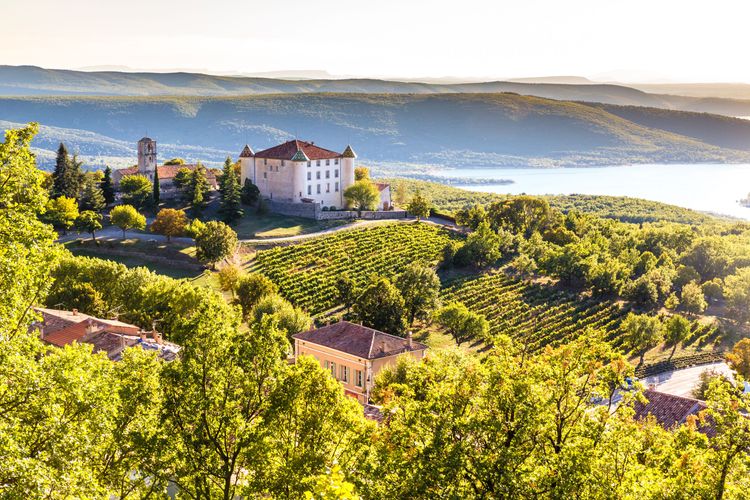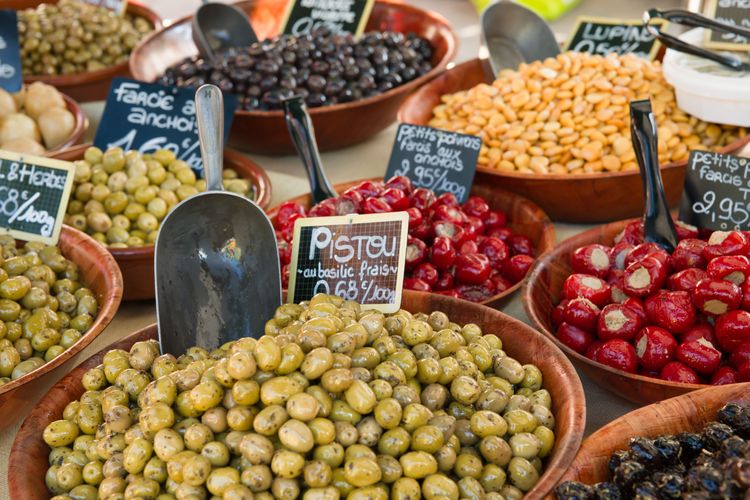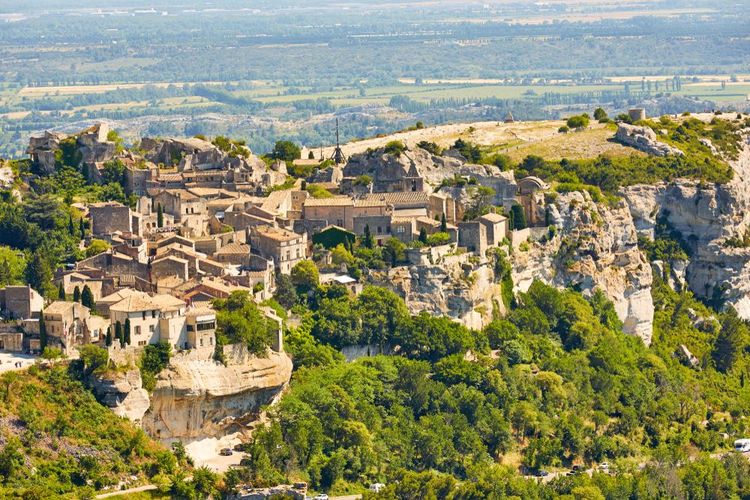The french dolce vita between sun, lavender and cicadas

The name of this region alone is a reason to go there. Provence conjures up images of fields and the smell of lavender, pastis and olives, garrigue and the landscapes of Pagnol. Between a game of pétanque and a bouillabaisse, Provence evokes a whole part of the culture of the south of France. Marseille, with its accent and its bonne mère, Aix-en-Provence, with the colours celebrated by Cézanne, and Avignon, with its bridge, its Palais des Papes and its theatre festival, are just some of the places to visit that appeal to all the senses.
Nestling between the mountains of Provence, the Alps and the Mediterranean Sea, the coast enjoys a mild, pleasant climate, with brightly coloured vegetation. Golden beaches, red rock and crystal-clear waters sum up the landscapes of the Provencal coast. There are panoramas as varied as the Mediterranean coastline, the typical limestone cliffs between Marseille and Cassis and the Camargue in the Rhône delta area.

The Renaissance château in the village of Aiguines overlooking Lac de Sainte-Croix.
- © Zdenek Matyas Photography / ShutterstockThis region, rich in history and culture, bears witness to its highly artistic past. The sacred art of the Middle Ages can be found in the Cistercian abbeys in the hills, in the small churches dating from the Counter-Reformation period along the road linking the Alpes-Maritimes to Imperia, and in cathedrals such as Notre-Dame de la Garde in Marseille and the Palais des Papes in Avignon.
The colours of Provence have also fascinated and inspired many artists, particularly painters. Van Gogh, for example, spent 15 months in Arles and revolutionised his painting during this period. There is now a gallery in Arles in memory of Van Gogh, created by his artist friends. Similarly, Cézanne chose this region to paint in, and his studio is on the Lauves hill in Aix-en-Provence.

Le stand d’un marché provençal.
- © Isabella Pfenninger / ShutterstockProvence's varied gastronomy reflects the region's natural environment, with its mild climate favouring fruit and vegetable production for wines,oils,spices, flavours and sauces. From fish-based specialities such as bouillabaisse, to Dauphiné cuisine, mountain produce such as honey and jam, pastries and pastis, the gastronomy of this region is one of the most diverse and refined in France. Whether you're in one of Provence's big cities or one of its typical little villages, there are plenty of restaurants serving traditional dishes, and wine cellars where you can sample local wines.

The charming village of Les Baux-de-Provence.
- © lr.s / ShutterstockProvence lends itself to many sporting activities, allowing you to enjoy nature and discover magnificent landscapes. With its breathtaking views over the Mediterranean, the region attracts tourists and locals alike. So you can enjoy water sports, as well as the languor that is Marseille.
Visitors can also follow countless hiking trails through lavender fields and olive groves or along the calanques. The flora of Provence is extremely varied, and it is in an environment rich in the scents of resin and intoxicating essences that you can come across deer, wild boar, snakes, lizards and other animals, all accompanied by the song of the cicadas, to the sound of which everyone says: "We're in the South! The best place to discover the natural elements of Provence is undoubtedly the Parc Naturel Régional du Luberon: between the garrigue, the cliffs, the gorges and the rivers, this park is committed to preserving biodiversity through the protection of species.
How to get there?
The fastest and most convenient options to get to Provence are generally flying to Nice or Marseille, or taking the Eurostar+TGV train from London. Driving or taking a coach is cheaper but involves much longer travel times
Where to stay?
There are plenty ofhotels, guest houses, rentalflats andyouth hostels to choose from in Provence's larger towns and cities. In the small stone villages or in the heart of the Provençal countryside, you'll have no trouble finding mas, bastides and even châteaux where you can enjoy the dolce vita typical of the south of France.
Practical information
Visits
There's so much to see and do in this beautiful region that you won't want to get bored during your stay in Provence. Several towns offer tourist passes so that you can discover their most beautiful monuments at a reduced price. These include the Aix-en-Provence City Pass, which gives you access to 14 of the city's museums and must-see tourist sites, the Marseille City Pass, which gives you access to attractions such as the MUCEM and the boat to the Frioul Islands, as well as to the public transport network, and theAvignon City Pass, which gives you access to several of the city's attractions, including the Palais des Papes and Fort Saint André.
Best time of year
It's best to visit Provence in spring or autumn, so you can take advantage of the pleasant temperatures to wander around the region. In summer, thousands of tourists flock to the region and the mercury can soar, but it's at this time of year that the beaches are at their most delectable. If you come in winter, you can avoid the crowds, but bring warm clothes: even though the sun shines all year round in the south of France, the wind can quickly chill the air.
And if you want to see the lavender fields in flower, a landscape so typical of Provence, plan your trip between mid-June and August and get ready to be amazed.
Transport
To get around Provence, we recommend you bring your own car or hire one. This way, you can explore the region at your own pace and get off the beaten track to discover incredible landscapes and hidden gems.
Despite everything, the bus network in Provence is still fairly well developed, although you'll need to be well organised to make do with public transport: the Le Pilote Website
will help you plan your routes. TER trains also criss-cross the Provence-Alpes-Côte d'Azur region.
Safety
You can travel to Provence with peace of mind, as you won't run many risks when you're in the region. Just keep an eye on your belongings, especially in the big cities, and you should be fine!
What to eat
A symphony of colours, scents and flavours, Provençal cuisine alone is worth the trip. Colourful vegetables, olives and olive oil, condiments and herbs, and anchovies are always among the dominant notes: they are used to make ratatouille, tapenade, rouille, aïoli, pistou soup and salade niçoise. Meat and charcuterie specialities (lamb chops, rabbit à la provençale, stuffed meats) and, of course, fish (bouillabaisse, bourride) have also become staples of the Provençal way of life.
When it comes to sweets, there's no shortage either, with honey and jams from the mountains, calissons from Aix, berlingots from Carpentras, candied fruit from Apt, câlins and tarts from Saint-Tropez...
As for pastis and local wines (Châteauneuf-du-Pape, Côtes-de-Provence, Rasteau, Bandol...), they should of course be drunk in moderation.
What to bring back
Bring a bit of Provence straight home with you, thanks to the Provençal tablecloths and fabrics you'll find on the markets. And if you don't want to forget the sweet scents of the South of France, try lavender sachets or Marseille soap. All the typically Provençal sweets and drinks are sure to please your friends and family.
If you can afford it, explore Provence in a convertible car: it's so exhilarating to drive through these colourful, fragrant landscapes with your hair blowing in the wind! The sense of freedom you feel is indescribable.
explore Try out our comparators
It is Easy to travel



